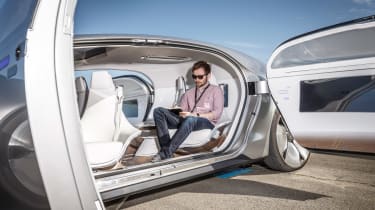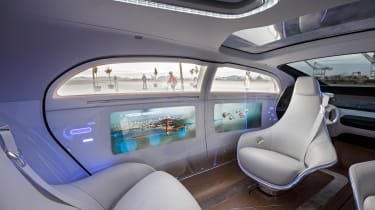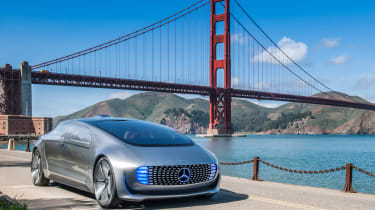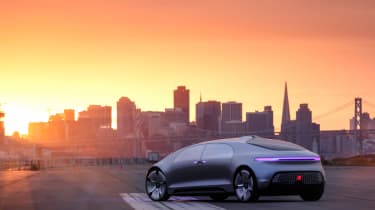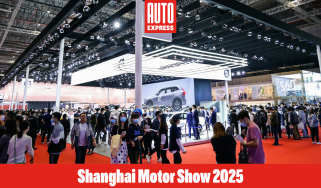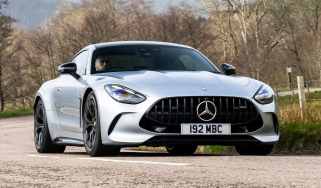What’s it like to ride in Mercedes’ F 015 driverless car?
Our first ride in the fully autonomous Mercedes F 015 Luxury In Motion research vehicle
Mercedes-Benz now firmly believes that "the car is growing beyond its role as a mere means of transportation," and there’s no greater demonstration of that than the German manufacturer’s fully autonomous F 015 Luxury In Motion research vehicle, something which Mercedes thinks represents a realistic image of the future of mobility.
• Driverless cars: all you need to know
So the name might need a little bit of work, but the technology, design and engineering that comes with it would appear to be something plucked from the script of a sci-fi blockbuster. This 5.2-metre-long roadgoing spaceship is powered by hydrogen, generates it own electricity, emits no carbon dioxide and has a total range of 684 miles – oh, and let's not forget, is capable of driving itself.
This isn’t the first time we’ve seen the F 015, with its debut public appearance coming at the Consumer Electronic Show (CES) in Las Vegas earlier in the year, but this is our first hands-on experience.
Its design may look pure fantasy, but its appearance has been crafted with a heavy dose of functionality in mind. It’s slightly longer, wider and taller than that of long wheelbase S-Class but that’s where the similarities end. The body structure is a hybrid of carbon fibre reinforced plastic, aluminium and high-strength steel, so it’s as rigid and strong as a standard Mercedes production model but is around 40 per cent lighter.
• The Google car: production-ready version of Google's driverless car revealed
Vast twin rear-hinged doors open to 90 degrees and grant access to more of a mobile living space than a traditional car interior, fitted with four independent rotating chairs framed with aluminium and trimmed in leather. The uninterrupted curvature of the body creates a huge amount of space inside, with the driver and front-seat passenger able to spin 180 degrees to allow a face-to-face seat configuration with those in the back.
Fuelled by hydrogen and powered by electricity, the F 015 glides off to the increasingly familiar whirr of an electric motor. It’s a completely alien but absorbing experience to be ushered around without the direct input of a driver. While the state of California has granted manufacturers such as Mercedes permission to test and trail autonomous vehicles on public roads, for logistical and safety reason we were confined to a private testing facility.
The F 015 dispatched a reproduction of a crowded junction without putting a foot wrong or causing disruption to those inside. As this is going on, the car is in constant communication with the outside world and assessing potential dangers using a labyrinth of integrated lasers, radars and LED fields.
With the driver now merely a spare part, this whole new method of transportation allows you to fully immerse yourself in the lavishly-appointed cabin of the F 015. You can help but be drawn to the completely digital surround - made of six screens on the doors - and dash, which are controlled via hand gestures, eye tracking or touch.
Autonomous tech is already beginning to trickle down into mainstream products, with active park assist, adaptive cruise control and city braking an increasingly more common sight on the market. What the F 015 does, however, is take that to technology to the next level and shows the ultimate sign of faith in technology.
The F 015 is designed to bypass those journeys which are more of a task than a treat, with the time gained from shifting from a driver to a passenger able to be put to more effective and efficient use. There is, however, a manual override function which allows you to take full control of the car, which will see the steering wheel automatically extending from the dashboard.
Mercedes also believes vehicles such as the F 015 open up the opportunity to explore a new urban catered especially for autonomous vehicles. So not only might the vehicles of the future operate radically different to the ones we’re familiar with today, but the roads they inhabit could also look dramatically different, too.
Now read all about autonomous cars with our need-to-know guide.
Find a car with the experts


